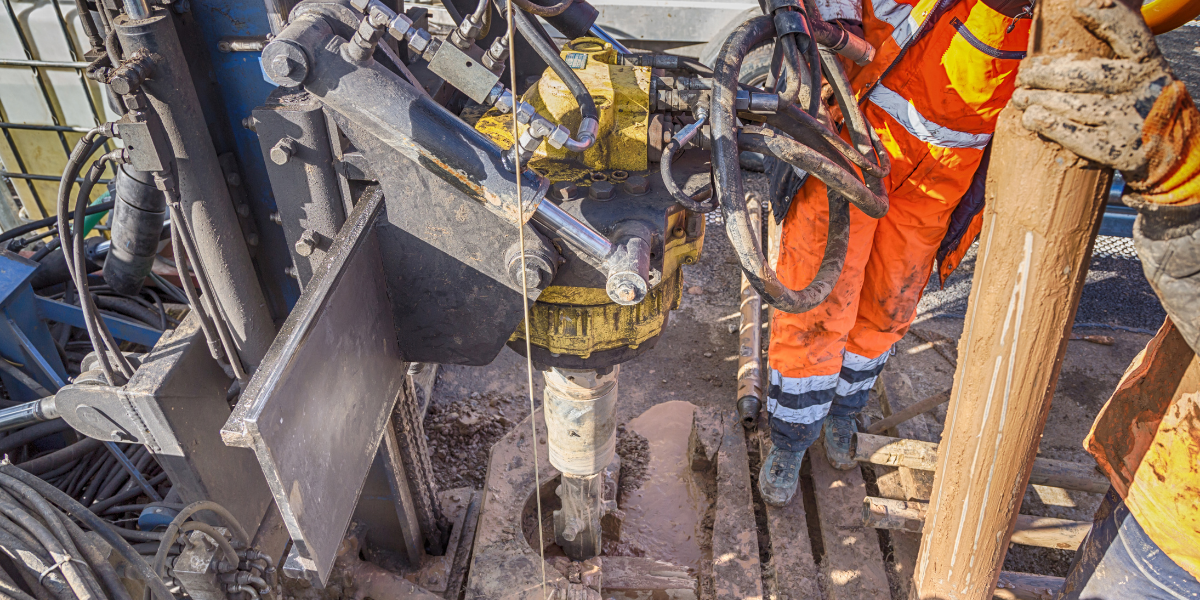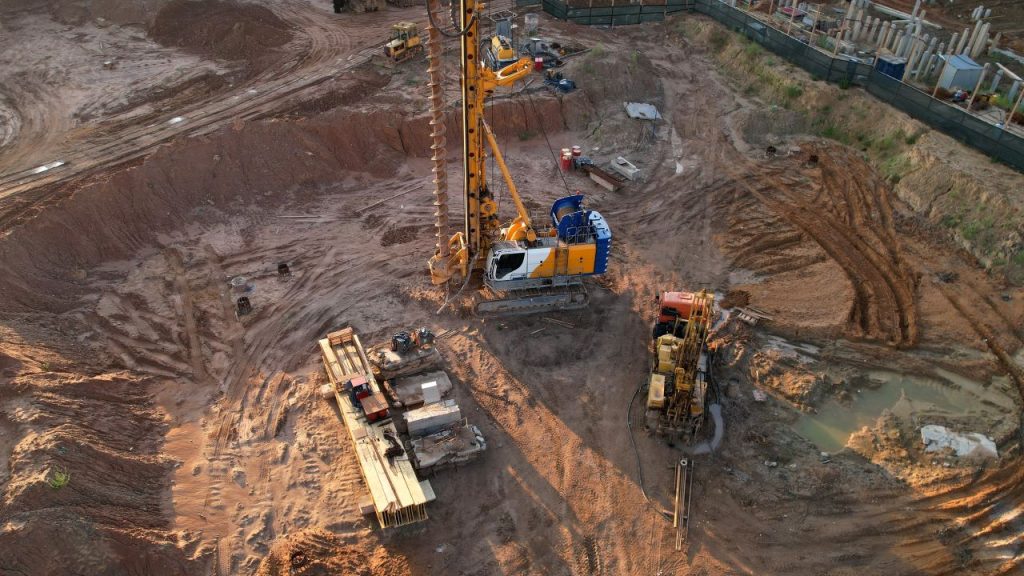The Development of Civil Consulting Engineers in the Modern Period
Wiki Article
An Extensive Consider the Extent of Technique for Geotechnical Designers and Their Influence On Job Expediency and Risk Mitigation
The extent of method for geotechnical designers incorporates a variety of essential responsibilities that straight affect task feasibility and risk administration. From conducting comprehensive site examinations to analyzing subsurface conditions, their knowledge is crucial in shaping foundation style and construction approaches. As tasks increasingly come across intricate geological difficulties, comprehending the nuanced function of these specialists becomes crucial for making sure successful end results. The effects of their job prolong beyond mere evaluation; they can considerably change the trajectory of a project. What specific approaches do geotechnical engineers use to navigate these complexities properly?Functions and Obligations of Geotechnical Engineers
Geotechnical designers play a critical role in the structure of building projects, making certain that structures are built on strong ground. Their duties include a variety of tasks important for analyzing dirt and rock homes, which straight affect job expediency and safety. Geotechnical designers conduct site investigations to collect vital data regarding subsurface problems. This includes drilling boreholes, tasting soil and rock, and conducting in-situ examinations to figure out material features.
Cooperation is likewise a crucial element of their role; they function carefully with civil engineers, architects, and ecological experts to guarantee that geotechnical considerations are incorporated into overall job preparation. Eventually, the knowledge of geotechnical engineers is important in promoting the safety, sustainability, and stability of building endeavors.
Trick Areas of Geotechnical Analysis
Dirt samples and geological studies are fundamental aspects in the essential locations of geotechnical analysis. These activities provide important data regarding the chemical and physical residential properties of the subsurface materials, enabling engineers to examine website conditions accurately. The analysis typically incorporates soil category, compaction, shear toughness, and permeability, every one of which are essential for understanding the behavior of dirts under different loading problems.One more significant area of focus is slope security analysis, which assesses the threat of landslides or soil erosion. This includes analyzing the geometry of slopes, dirt kinds, and groundwater conditions. Site characterization is likewise vital, as it involves a detailed investigation of the site's background, consisting of previous construction, contamination, and natural dangers.
In addition, groundwater evaluation plays an important function in geotechnical evaluation, affecting both the layout and construction phases. Comprehending the groundwater table, circulation instructions, and possible fluctuations is vital for reliable structure design and stormwater administration.
With each other, these essential areas of geotechnical analysis form a comprehensive structure that notifies decision-making processes, guaranteeing safe and sustainable engineering techniques while lessening prospective risks related to subsurface problems.
Effect On Project Feasibility
The usefulness of a building job hinges dramatically on the understandings gained from geotechnical investigations. These investigations give vital information regarding dirt residential or commercial properties, groundwater problems, and subsurface characteristics, which are crucial for figuring out the suitability of a website for building and construction. By evaluating elements such as dirt bearing capacity, negotiation potential, and incline security, geotechnical engineers play an essential role in reviewing whether a project can continue as intended or if modifications are required.Additionally, the results of geotechnical researches directly affect project style and building and construction methodologies. Precise geotechnical information permits for notified decision-making, ensuring that structural layouts suit site-specific conditions and follow regulative needs. This procedure helps in enhancing resource appropriation, consequently minimizing unanticipated delays and expense overruns.
In addition, a detailed geotechnical evaluation enhances the general feasibility of a task by recognizing possible challenges early in the planning stage. By resolving these difficulties proactively, stakeholders can enhance the project's likelihood of success, making sure that it fulfills both useful and financial goals. In recap, the payments of geotechnical designers are integral to establishing job feasibility, consequently preparing for reliable project execution.
Risk Mitigation Techniques
While building projects inherently include different unpredictabilities, carrying out efficient threat reduction approaches can considerably decrease potential concerns occurring from geotechnical variables. Geotechnical designers play a critical function in recognizing, analyzing, and addressing threats connected with subsurface problems, ensuring that projects proceed smoothly and remain within budget.One main technique entails detailed site investigations, that include soil tasting, in-situ screening, and research laboratory analysis. These assessments supply vital data on soil behavior, toughness, and structure, allowing engineers to design structures and earthworks that are both safe and reliable. Moreover, using innovative modeling methods, such as finite component evaluation, allows designers to predict exactly how soil and architectural interactions might advance under different loading conditions.
An additional reliable mitigation strategy is the implementation of appropriate style modifications, such as making use of support methods or embracing alternative building and construction methods, which can improve security and reduce vulnerability to geotechnical issues. Furthermore, continual tracking of website conditions during building and construction can help with timely interventions, hence reducing the probability of unanticipated problems.
Study and Real-World Applications
Study offer important understandings right into the sensible applications of geotechnical engineering principles and highlight the performance of danger mitigation methods in real-world scenarios. One notable example is the building and construction of the Centuries Dome in London, where cutting-edge ground therapy strategies were applied to resolve tough dirt conditions. By employing deep concrete mixing and soil stabilization approaches, designers effectively developed a steady structure that alleviated prospective settlement threats, ensuring the project's usefulness.An additional case is the stablizing of the hill for the new freeway in California, where comprehensive incline analysis and monitoring were utilized. Geotechnical engineers utilized preserving wall surfaces and drain systems to handle groundwater, dramatically decreasing the risk of landslides. This aggressive approach not just preserved the integrity of the freeway but additionally enhanced public security.
In addition, the development of a major airport incurable demonstrated the relevance of complete site investigations. geotech engineer. Geotechnical engineers recognized troublesome soil layers and advised details structure designs, resulting in an effective job conclusion with reduced hold-ups. These study underscore the crucial role that geotechnical designers play in civil consulting engineers assessing risks and applying effective options, thereby improving job usefulness and general success
Conclusion

By analyzing aspects such as dirt bearing capacity, settlement possibility, and incline stability, geotechnical engineers play a pivotal duty in evaluating whether a job can proceed as prepared or if alterations are required.
In summary, the payments of geotechnical designers are indispensable to developing task feasibility, thereby laying the groundwork for reliable task execution.
Geotechnical designers determined troublesome dirt layers and suggested details structure layouts, leading to a successful project completion with lessened delays. civil consulting engineers. These case research studies emphasize the critical duty that geotechnical designers play in examining risks and applying efficient options, thus improving project feasibility and total success
Through effective risk reduction strategies and the application of advanced modeling techniques, geotechnical designers enhance job end results and reduce hazards related to dirt and groundwater conditions.
Report this wiki page